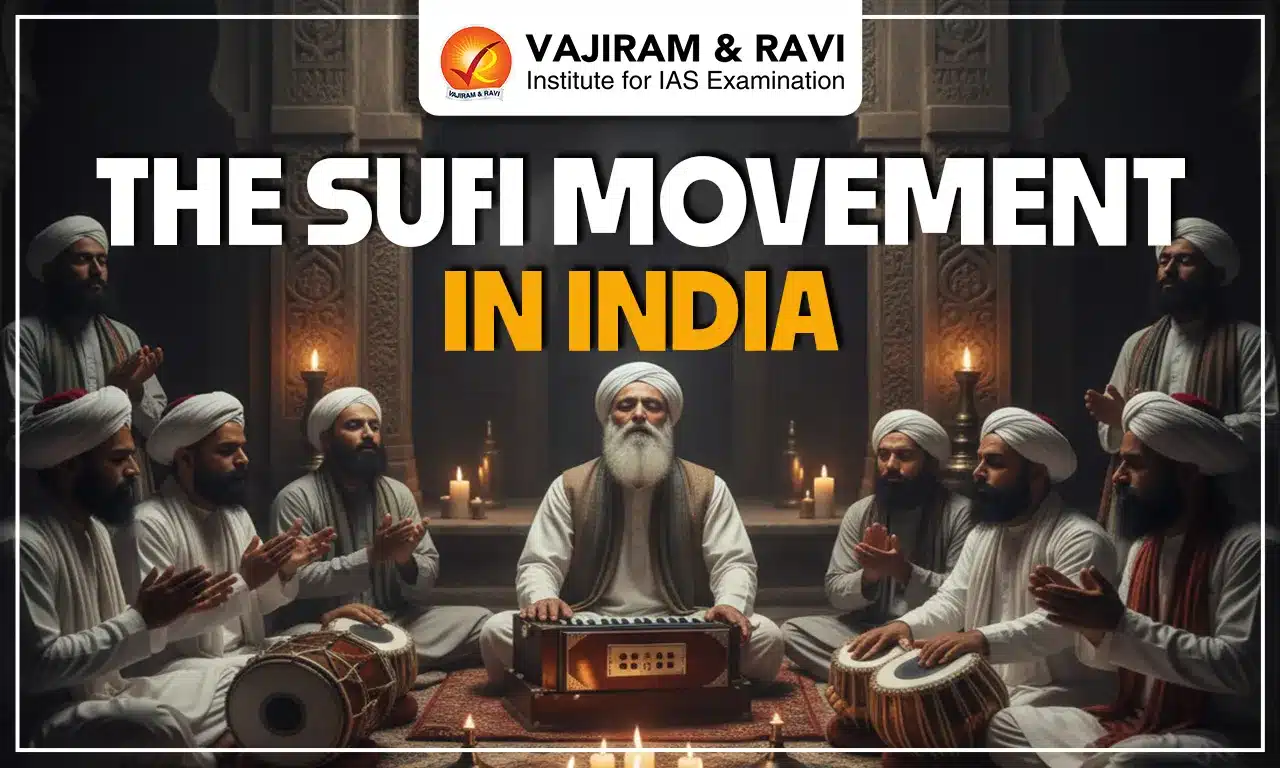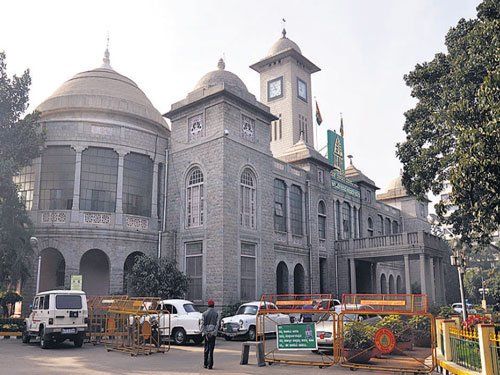What is Sufism?
Sufism is a term used to refer to mystical religious ideas in Islam. It had evolved into a well-developed movement by the 11th century.
- Sufis stress the importance of traversing the path of the Sufi pir, enabling one to establish a direct communion with the divine.
- Fundamental to Sufism is God, man and the relation between them, which is Love.
- The Sufis were regarded as people who kept their hearts pure.
- The murid (disciple) passes through maqamat (various stages) in this process of experiencing communication with the divine.
- The Khanqah (the hospice) was the centre of activities of the various Sufi orders. The khanqah was led by a shaikh, pir or murshid (teacher) who lived with his murids (disciples).
- By the twelfth century, the Sufis were organised in silsilahs (orders). The word silsilah meant chain, signifying an unbreakable chain between the pir and the murid.
- With the death of the pir, his tomb or shrine, the dargah became a centre for his disciples and followers.
- In the 10th century, Sufism spread across important regions of the Islamic empire. Iran, Khurasan, Transoxiana, Egypt, Syria and Baghdad were important Sufi centres.
Features of the Sufi Movement in India
The Sufi movement in India commenced in the 11th century A.D. The Sufi movement, as it emerged in India, the Sufi movement had the following features:
- The Sufis were organised in a number of different silsilahs (orders)
- Most of these orders were led by some prominent Sufi saint or pir. It was named after them and was followed by his disciples.
- The Sufis believed that for union with God, one needs a spiritual guru or Pir.
- The Sufi pirs lived in Khanqahs with their disciples
- The Khanqah (the hospice) was the centre of Sufi activities
- The Khanqahs emerged as important centres of learning which were different from madrasas, the centres of theology
- Many Sufis enjoyed the musical congregation or sama in their Khanqahs. A musical form called the qawwali developed during this period.
- The ziyarat, or pilgrimage to the tombs of the Sufi saints, soon emerged as an important form of ritual pilgrimage.
- Most of the Sufis believed in the performance of miracles. Almost all pirs were associated with the miracles performed by them.
- The different Sufi orders had diverse approaches to the matters of polity and state.
Sufi Orders
The Sufi orders are broadly divided into two: Ba-shara, that is, those who followed the Islamic Law and Be-shara, that is, those who were not bound by it. Both types prevailed in India.
| The Chishti Silsilah | |
| Founder: Khwaja Muinuddin Chishti | |
| First Phase: | |
|
The Chishti order was founded in a village called Khwaja Chishti (near Herat). In India, the Chishti silsilah was founded by Khwaja Muinuddin Chishti (born in 1142 AD), who came to India around 1192 (after the invasion of Muhammad Ghori). He made Ajmer the main centre for his teaching.
|
|
| Second Phase: | |
|
| The Suhrawardi Silsilah |
| Founder: Shihabuddin Suhrawardi |
|
This Silsilah was founded by Shihabuddin Suhrawardi in Baghdad. It was established in India by Sheikh Bahauddin Zakariya.
|
| The Naqshbandi Silsilah |
| Founder: Khwaja Bahauddin Naqshbandi |
|
In India, this order was established by Khwaja Bahauddin Naqshbandi. From the beginning, this Order's mystics stressed the Shariat's observance and denounced all innovations or biddat.
|
| The Qadri Silsilah |
| Founder: Sheikh Abdul Qadir |
|
The Quadiriyya silsilah was popular in Punjab.
|
| Other Sufi Orders | |
| The Firdausi order |
|
| The Rishi order |
|
The importance of the Sufi Movement
The Sufi movement made a valuable contribution to Indian society.
- Like the Bhakti saints who were engaged in breaking down the barriers within Hinduism, the Sufis too infused a new liberal outlook within Islam.
- The Sufis believed in the concept of Wahdat-ul-Wajud (Unity of Being), which was promoted by Ibn-i-Arabi (1165-1240).
- He opined that all beings are essentially one. Different religions were identical. This doctrine gained popularity in India.
- There was also much exchange of ideas between the Sufis and Indian yogis. In fact, the hatha-yoga treatise Amrita Kunda was translated into Arabic and Persian.
- A notable contribution of the Sufis was their service to the poorer and downtrodden sections of society.
- Nizamuddin Auliya was famous for distributing gifts amongst the needy irrespective of religion or caste.
- According to the Sufis, the highest form of devotion to God was the service of mankind.
- They treated Hindus and Muslims alike. Amir Khusrau said, “Though the Hindu is not like me in religion, he believes in the same things that I do”.
- The Sufi movement encouraged equality and brotherhood. In fact, The Islamic emphasis upon equality was respected far more by the Sufis than by the ulema.
- The Orthodox attacked the doctrines of the Sufis. The Sufis also denounced the ulema.
- The Sufi saints tried to bring about social reforms too.
- Like the Bhakti saints, the Sufi saints contributed significantly to the growth of rich regional literature.
- Most of the Sufi saints were poets who chose to write in local languages.
- Baba Farid recommended the use of Punjabi for religious writings.
- Shaikh Hamiduddin, before him, wrote in Hindawi. His verses are the best examples of early Hindawi translations of Persian mystical poetry.
- Syed Gesu Daraz was the first writer of Deccani Hindi. He found Hindi more expressive than Persian to explain mysticism.
- Many Sufi works were also written in Bengali.
- The most notable writer of this period was Amir Khusrau (1252-1325), a follower of Nizamuddin Auliya.
- Khusrau took pride in being an Indian and looked at the history and culture of Hindustan as a part of his own tradition.
- He wrote verses in Hindi (Hindawi) and employed the Persian metre in Hindi.
- He created a new style called sabaq-i-hindi.
Last updated on December, 2025
→ Check out the latest UPSC Syllabus 2026 here.
→ Join Vajiram & Ravi’s Interview Guidance Programme for expert help to crack your final UPSC stage.
→ UPSC Mains Result 2025 is now out.
→ UPSC Notification 2026 is scheduled to be released on January 14, 2026.
→ UPSC Calendar 2026 is released on 15th May, 2025.
→ The UPSC Vacancy 2025 were released 1129, out of which 979 were for UPSC CSE and remaining 150 are for UPSC IFoS.
→ UPSC Prelims 2026 will be conducted on 24th May, 2026 & UPSC Mains 2026 will be conducted on 21st August 2026.
→ The UPSC Selection Process is of 3 stages-Prelims, Mains and Interview.
→ UPSC Result 2024 is released with latest UPSC Marksheet 2024. Check Now!
→ UPSC Prelims Result 2025 is out now for the CSE held on 25 May 2025.
→ UPSC Toppers List 2024 is released now. Shakti Dubey is UPSC AIR 1 2024 Topper.
→ UPSC Prelims Question Paper 2025 and Unofficial Prelims Answer Key 2025 are available now.
→ UPSC Mains Question Paper 2025 is out for Essay, GS 1, 2, 3 & GS 4.
→ UPSC Mains Indian Language Question Paper 2025 is now out.
→ UPSC Mains Optional Question Paper 2025 is now out.
→ Also check Best IAS Coaching in Delhi
The Sufi Movement in India FAQs
Q1. Is Sufism yet another religion?+
Q2. Who was the Sufi saint during Akbar?+

















